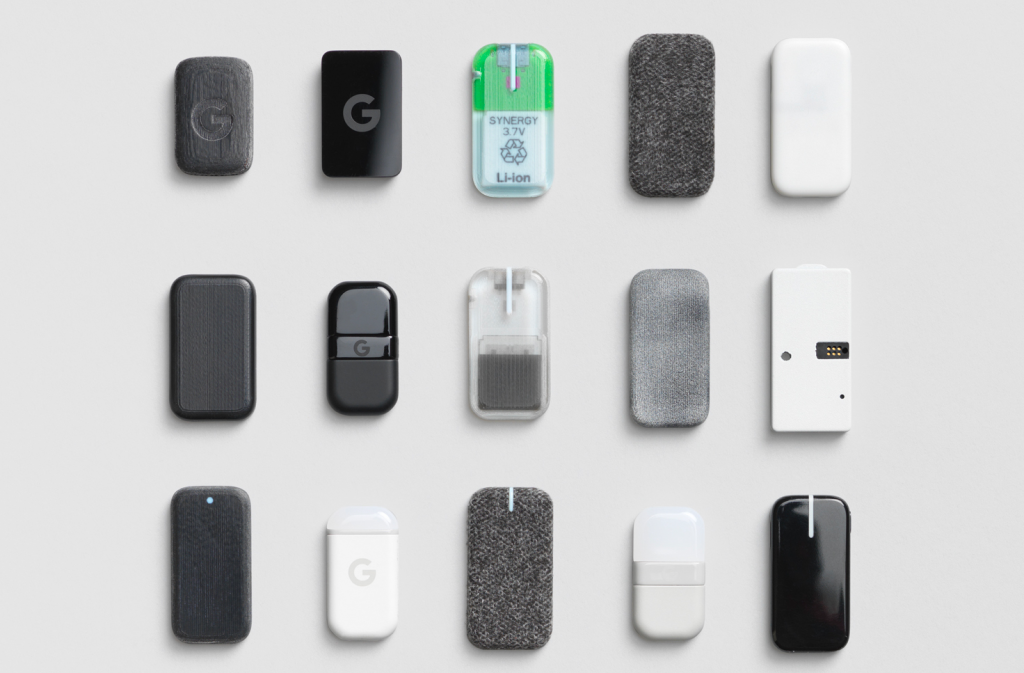Google’s Advanced Technology and Projects (ATAP) division has utilized 3D printer OEM Stratasys’ PolyJet additive manufacturing technology to prototype its ‘Jacquard’ wearable electronic sensors.
The 3D printed tags can be attached to everyday clothing items to give them motion-sensitive functionality, and enable their wearers to control mobile phones via certain gestures. By adopting Stratasys’ J8 system, the ATAP team has now been able to rapidly prototype the devices, and deploy them inside products such as an interactive ‘gaming athletic shoe’ and ‘smart backpack.’
“Printers are really catching up to how designers think about design and materials,” said Bryan Allen, a Technical Program Manager and Lab lead at ATAP. “The future is coming a lot faster than we thought it would, and at Google ATAP, we’re building the capabilities for us to be able to predict what’s possible.”
“Our designs are meant to disappear. They’re meant to fit seamlessly into our aesthetic surroundings.”
Google’s fabricated fashion
Over the last five years, Google has steadily commercialized its Jacquard platform, and its current range includes products like sensor-integrated Levi jackets and Adidas insoles. Each of these wearables contain a tiny embedded tag, that provides users with interactive control over various digital devices, without needing to physically hold them.
While wearing Jacquard-enabled devices, users can simply swipe or tap to perform actions such as pausing music, taking a photo or even answering a call. The sensor itself is small and agile too, meaning that Google can integrate it into almost any fabric, but the merging process can be complex, and often requires multiple technologies to assemble.
For Allen, that’s why Google chose to adopt Stratasys’ technology, as a means of both simplifying the process, and reaping its application-specific benefits. “Our team is really looking for solutions,” explained Allen. “We’re always searching and exploring new technologies, but in the end the most important thing is application-driven innovation.”

Fabricating the Jacquard devices
During the Jacquard’s design process, which was led by Google’s Director of Engineering Ivan Poupyrev, the ATAP team found that Stratasys’ J8 machine provided excellent flexibility. Using the printer’s Pantone Matching System, for instance, the engineers were able to fabricate sensors that effectively mirrored the wood or leather textures of their host materials.
Adopting the J8 also enabled the team to rapidly produce prototypes that reflected the quality of the final product, while reducing lead times from three weeks to just a single day. According to Allen, utilizing 3D printing to iterate the Jacquard effectively “de-risked” the process, and “bought the team design time to explore and optimize their solutions.”
Having successfully used a beta of Stratasys’ KeyShot 3D modelling software in the Jacquard’s R&D, the ATAP team now intends to use its other solutions such as its Digital Anatomy system in future iterations. Given that the machine is often used to fabricate human anatomical replicas, the engineers hope that it will be adept at producing wearable devices for body parts as well.
Wearable 3D printed biosensors
Wearable additive manufactured smart devices are a hot topic of research right now, and studies into biosensors in particular, have made significant progress over the last 12 months.
Researchers based at Clarkson University have developed a custom bioink, and deployed it to create a range of skin-compatible 3D printed biosensors. Once exposed to certain levels of UV radiation, the device’s ink changes color, alerting wearers to when they’re being over-exposed to the sun’s rays.
Scientists from the National University of Singapore (NUS), meanwhile, have 3D printed a sweat-evaporating skin film. While the device has initially been designed for applications such as shoe linings, in future, it could be deployed within electronic watches or fitness trackers.
Elsewhere, a team at the CCDC Soldier Center have 3D printed microfluidic monitoring devices that could be used to maximize the survival chances of soldiers in the field. Currently, the researchers are attempting to turn their novel lab-on-a-chip devices into end-use fieldable electronics.
To stay up to date with the latest 3D printing news, don’t forget to subscribe to the 3D Printing Industry newsletter or follow us on Twitter or liking our page on Facebook.
Are you looking for a job in the additive manufacturing industry? Visit 3D Printing Jobs for a selection of roles in the industry.
Featured image shows the Google Jacquard device being held up against a denim sleeve. Image via Stratasys.



